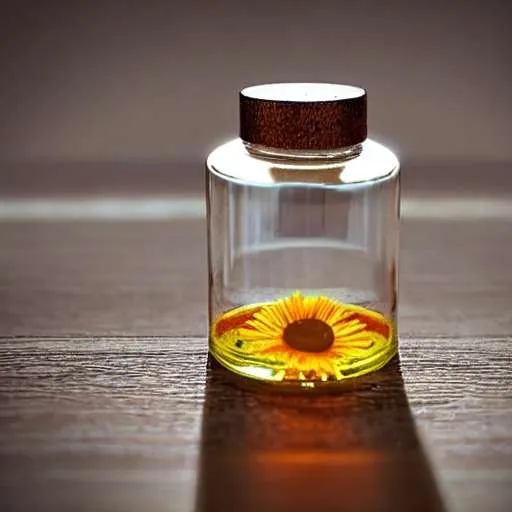
What is Calendula?
Calendula, also known as Calendula officinalis, is a plant species belonging to the Asteraceae family. It is commonly referred to as marigold, pot marigold, or garden marigold, although it is different from the common marigold (Tagetes species). Calendula is native to the Mediterranean region but is now cultivated worldwide for its medicinal and ornamental properties.
Calendula plants are known for their bright, vibrant yellow or orange flowers, which have a distinct ray-like petal arrangement. The flowers bloom from late spring to early fall and have a slightly spicy aroma. Calendula is a popular choice in gardens and is often used as an ornamental plant, border plant, or in container gardening.
Besides its aesthetic appeal, calendula has been traditionally used for its medicinal properties. The petals of the flower contain various beneficial compounds, including flavonoids, carotenoids, and essential oils. These compounds possess anti-inflammatory, antimicrobial, and antioxidant properties. Calendula extracts are used in herbal remedies, skincare products, and topical ointments.
In traditional medicine, calendula has been used to soothe skin irritations, treat wounds, and promote healing. It is often used topically for conditions such as cuts, burns, rashes, and insect bites. Calendula preparations may also be used in creams, oils, and lotions for dry skin, eczema, and dermatitis.
History of Calendula
Calendula, also known as marigold, has a rich history that spans centuries. Its origins can be traced back to ancient civilizations such as the Egyptians, Greeks, and Romans, who revered it for its medicinal and culinary properties.
In traditional medicine, calendula was used to treat various ailments, ranging from skin conditions to digestive disorders. Its vibrant flowers were also used for decorative and ceremonial purposes.
Over time, calendula’s popularity spread across the globe, and it became an essential ingredient in herbal remedies and skincare products. Today, calendula continues to be cherished for its therapeutic qualities and remains a beloved flower in gardens worldwide.
Buy Calendula Seeds: Click here
Maximum Purpose of Use Calendula
Calendula has a multitude of purposes and can be used in various ways. Here are some of the key purposes for which calendula is commonly used:
1- Medicinal Uses.
2- Skincare Products.
3- Culinary Uses.
4- Natural Dyes.
5- Companion Planting.

Calendula Oil
Calendula oil is a versatile and highly valued oil derived from the bright orange and yellow petals of the calendula flower. Known for its numerous therapeutic properties, calendula oil is a popular ingredient in skincare and medicinal preparations.
It is rich in antioxidants, essential fatty acids, and anti-inflammatory compounds, making it beneficial for soothing and healing the skin.
Calendula oil is used to alleviate various skin conditions like dryness, eczema, and dermatitis. It promotes wound healing, reduces inflammation, and soothes irritations. When applied topically, calendula oil moisturizes the skin, leaving it soft, supple, and rejuvenated. Its gentle and nourishing nature makes it suitable for all skin types.
How to make Calendula Oil?
Making calendula oil at home is a simple process. Here’s a step-by-step guide on how to make calendula oil:
Harvesting: Start by harvesting fresh calendula flowers when they are in full bloom. Choose flowers that are vibrant and free from any signs of decay or damage.
Drying: Gently remove the petals from the flower heads and spread them out on a clean, dry surface. Allow the petals to air dry in a warm, well-ventilated area for about a week, or until they become crispy and brittle.
Infusion: Once the petals are dry, place them in a clean glass jar. Pour a carrier oil of your choice, such as olive oil or sunflower oil, over the petals until they are completely covered. Ensure that the petals are fully submerged in the oil.
Solar Infusion: Seal the jar tightly and place it in a sunny location, such as a windowsill, for about 2 to 4 weeks. The warmth of the sun will help extract the beneficial properties of the calendula into the oil. Shake the jar gently every few days to promote the infusion process.
Straining: After the desired infusion period, strain the oil using a cheesecloth or fine-mesh sieve to remove the spent petals. Squeeze the cloth or sieve to extract as much oil as possible.
Storage: Transfer the calendula oil into a clean, dark-colored glass bottle or jar. Dark glass helps protect the oil from light degradation. Store the oil in a cool, dark place to maintain its potency. It can typically last for several months when stored properly.
Note: It’s essential to ensure that all tools, containers, and surfaces used are clean and free from moisture to prevent spoilage or contamination.
Buy Calendula Seeds: Click here

Calendula Lotion
Calendula lotion is a soothing skincare product infused with the healing properties of calendula flowers. It is crafted by infusing calendula petals into a lotion base, resulting in a gentle and nourishing formulation.
Calendula lotion is known for its ability to moisturize and hydrate the skin, leaving it soft and supple. Its anti-inflammatory properties help calm irritated skin and reduce redness.
The lotion is often used to alleviate dryness, soothe minor skin irritations, and promote overall skin health. With its delicate floral scent and natural ingredients, calendula lotion offers a comforting and rejuvenating experience for daily skincare routines.
How to make Calendula Lotion?
Making your own calendula lotion is a rewarding and straightforward process. Here’s a simple recipe to guide you:
Ingredients:
★1 cup of dried calendula petals
★1 cup of carrier oil (such as olive oil or sweet almond oil)
★1/4 cup of beeswax pellets
★1 cup of distilled water
Optional: a few drops of essential oil (like lavender or chamomile) for added fragrance
Instructions:
In a clean, dry glass jar, combine the dried calendula petals and the carrier oil. Ensure that the petals are completely submerged in the oil.
Seal the jar tightly and place it in a cool, dark place for about 4 to 6 weeks to allow the petals to infuse into the oil.
Shake the jar gently every few days to promote the infusion process.
After the infusion period, strain the oil through a fine mesh strainer or cheesecloth into a clean bowl or double boiler.
Press the petals to extract as much oil as possible. Discard the used petals.
In a separate heat-safe container or double boiler, melt the beeswax pellets over low heat. Stir occasionally until fully melted.
Gradually pour the infused calendula oil into the melted beeswax while stirring continuously. Mix well to ensure the ingredients are thoroughly combined.
In a small saucepan, heat the distilled water until warm but not boiling. Remove from heat.
Slowly pour the warm water into the oil and beeswax mixture while whisking vigorously.
Continue whisking until the lotion emulsifies and thickens to a creamy consistency.
If desired, add a few drops of your preferred essential oil for fragrance. Stir well to incorporate.
Allow the lotion to cool completely, then transfer it into clean, sterilized jars or containers. Store in a cool, dry place.
Buy Calendula Seeds: Click here